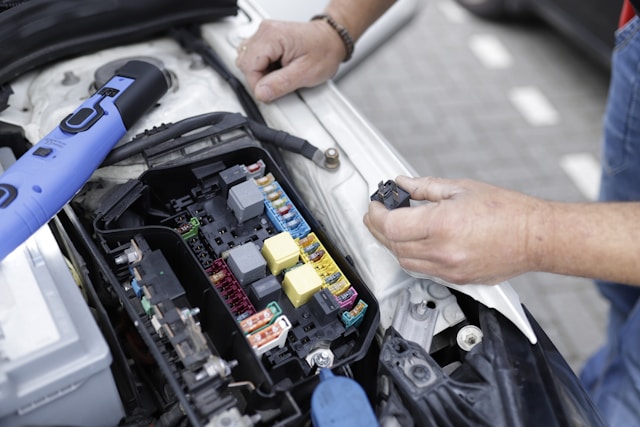The global output in the equipment market is projected to cross the $6 trillion mark in 2023. The compound annual growth rate (CAGR) for the industry from 2023 to 2028 is expected to exceed 11%. The number of enterprises in the segment will be 0.37 million by the end of the year.
While these revenue projections look great, the sheer number of players in the equipment manufacturing industry spells stiff competition. As a manufacturer, you may struggle to sell your products.
Beyond the competition, selling high-value industrial products is inherently complex. Most buyers have unique requirements and specifications, so you may have to personalize products for each of them. Safety, compliance, and environmental concerns complicate the selling process further.
In this article, we’ll dig deeper into the challenges of equipment manufacture sales and explore actionable steps to overcome these, so you can maximize the chances of success for your business.
Understanding the Challenges of Equipment Sales
Did you know that 2021 was a record-breaking year for the construction equipment sector? Nearly 1.2 million pieces were sold around the world, a growth of 9% over the previous year. Other segments witnessed similar trends as businesses regained control after the pandemic slowdown.
Despite the growth, several challenges resulted in a complex sales outlook in the industry. Here are a few you should know about.
Diverse Customer Requirements
Customer requirements in the equipment industry are often unique and specialized. You may need to personalize your products to match diverse preferences and retain customers for the long haul. Moreover, industry-specific demands require an in-depth understanding of various sectors.
Complex Product Information
Selling equipment involves explaining intricate technical specifications and features to buyers. Communicating this complex information can be challenging, resulting in miscommunication about the product’s capabilities.
Long Sales Cycles
Sales cycles in the equipment manufacturing industry are long and complex. Decision-makers often dig deep with extensive evaluations, expect customizations, and require multiple stakeholder approvals. As a seller, you need to think beyond closing deals quickly and focus on customer concerns and relationships. This requires persistence and adds a considerable amount of time to the sales process.
Market Volatility
Since the global equipment market is unpredictable, uncertainties can impact equipment sales. Factors such as global economic conditions, geopolitical events, and trade policies can affect buying behavior, demand, and pricing.
Technical and Regulatory Compliance
Technical standards and regulatory compliance guidelines add a layer of complexity to the equipment sales process. Every piece going into the market needs to adhere to industry-specific regulations relating to safety and compliance. For example, automotive manufacturers should adhere to ISO standards to ensure electrical safety. Likewise, pharmaceutical manufacturers must stick with Good Manufacturing Practice (GMP) standards for patient safety and product quality.
Steps to Simplify Equipment Sales
Now that you know the challenges of complex sales in the equipment manufacturing vertical, you should also look for solutions to overcome them. Here are a few steps to help you simplify complex equipment sales.
1. Streamline Product Information and Quoting
Streamlining product information with a centralized database is a great start. Ensure it has up-to-date product information with comprehensive details like specifications, features, availability, and pricing. You can also provide a configure-price-quote (CPQ) system to your sales team. Streamlining the process saves time, reduces errors, and enhances customer satisfaction.
2. Adopt Sales Automation Tech
Sales automation is an asset for all sales-focused organizations, and equipment manufacturing companies are no exception. A sales automation tool can help automate cumbersome tasks such as prospecting, lead nurturing, and follow-up emails. It enables your sales team to focus more on closing deals and building relationships.
3. Enhance Internal and Client Communication
Good communication fosters efficiency and customer satisfaction. Investing in collaboration tools improves internal communication and keeps all departments on the same page. Customer Relationship Management (CRM) software helps maintain clear and effective communication with clients, translating into transparency and trust.
4. Train and Educate Your Sales Team
Training and educating your sales team is perhaps the easiest way to simplify equipment sales. With proper training about your products, industry trends, and sales techniques, your sales reps can understand customer needs and recommend tailored solutions.
5. Optimize Inventory Management
Inventory management is a critical aspect of equipment sales. After all, you shouldn’t fall short of demand or block your funds in stagnant or dead inventory. Adopting inventory management software can help your team monitor stock levels, track product movement, and avoid overstocking or stockouts.
6. Excel with After-Sales Customer Support
Exceptional after-sales support can help you win the sales game. It is significant in the equipment sales process because buyers may need timely maintenance, repairs, and spare parts. Implementing a robust customer support system enables you to listen to problems and resolve them promptly. It develops healthy relationships and gets you word-of-mouth referrals from happy customers. Indeed, paying attention to customer success metrics helps ensure optimized revenue operations, which, in turn, helps improve sales performance.
7. Ensure Regulatory Compliance
Remember to track the industry standards and regulations related to your products and adapt quickly when they change. Your sales processes, product packaging and labeling, and documentation should comply with current regulations.
Conclusion
Complex sales processes can overwhelm equipment manufacturers already struggling with the challenges of production, regulations, and competition. Fortunately, simplifying sales can be easier than you might imagine. You can follow these steps to overcome the challenges, reach your customers, boost revenues, and build long-term relationships.







